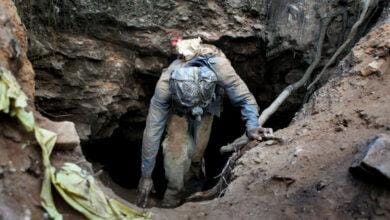In terms of tough working environments, there aren’t many that are as challenging as mining. And the overriding priority for the operators of mines is the safety of their employees. Considering that South Africa has some of the deepest mines in the world, and a historically poor safety record, many mine operators have become increasingly focused on the goal of zero loss of life or injury. While mining fatalities in South Africa have declined steadily to record lows over the last decade, the country saw an 18% increase in 2020 driven by accidents related to falling rocks and transportation, and 2021 may prove even worse.
As well as affecting employee safety, incidents can also be costly as they initiate operation stoppages. Mining operations can also be disrupted by equipment failure, with post-incident repairs and replacements again causing costly downtime. Thus, any opportunity for proactive maintenance should be welcomed.
Video surveillance – and evermore intelligent related technologies – is now being applied to every aspect of mining safety, while also being used to improve operational efficiency and enhance the security of mining operations from the perimeter to the rock face.
Poor visibility in mining: dealing with darkness and dust
Poor visibility can be a common mining challenge, but technologies designed to deal with low-light or even near darkness are now commonplace in surveillance cameras.
For example, advance IR solutions allow images to be captured in complete darkness, with cameras using integrated IR illumination. Technologies that provide full-colour, high-resolution video in extremely low light also exist – and a wide dynamic range can deliver detailed images in challenging lighting conditions where scenes include both very bright and dark areas.
In the context of mining, light isn’t the only thing that can affect visibility. With tonnes of earth being excavated, moved and processed, an inevitable by-product of the mining process is dust. This affects visibility and has implications for the mining operation as a whole.
Monitoring dust clouds is important for a number of reasons. Mining operations have a responsibility to surrounding communities. Dust clouds created and blown towards houses, schools and businesses cause more than simply annoyance – they pose a genuine risk to the community’s health and the environment. And, in an environment where heavy machinery and vehicles are commonplace, the effect of dust on operators’ visibility can create an additional hazard.
Cameras equipped with deep learning-based analytic applications can now detect and monitor a much greater variety of objects, including dust clouds, allowing remedial action to be taken, or the proactive warning of local communities and workers.
Managing the risks of mining machines
An additional safety risk posed in the mining industry, which can be compounded by poor visibility, comes from the sheer size of the machinery used in mining operations. The risks of operating such huge machinery relate to both the safety of mine employees and the implications of accidents between vehicles and machinery – which could cost millions of rands and bring mining operations to a halt.
As such, the use of onboard cameras – ruggedised to deal with the nature of mining – is increasingly common to aid operators and drivers with awareness and safety. In addition to visual cameras, onboard cameras equipped with thermal imaging can be an invaluable aid when visibility is obscured by dust. Body-worn cameras also have potential here, particularly for training and post-incident investigation.
Innovative applications of video analytics in mining
Recent years have seen an explosion in the capabilities of video surveillance analytics, with use cases in almost every industry sector, including mining. With deep learning now available in surveillance cameras, object recognition capabilities are becoming more accurate. In mining, these could be employed to ensure that workers are wearing the correct personal protective equipment before entering the mine or when moving around the site.
In addition, people counting analytics shows great potential in ensuring that certain areas of the mine don’t become dangerously overcrowded, with ruggedised door stations, intercoms and network audio speakers used for communication and alerts.
Beyond safety: operational efficiency and security in mining
While safety is, rightly, the number one priority for mine operators, video surveillance has an important role to play in two other key areas: operational efficiency and security.
Mining is a connected process, and any interruption will have costly knock-on effects. Prevention is always better than cure, and proactive maintenance ahead of failure is optimal. For instance, conveyor belts are critical for removing soil, rock and minerals from the mining face, and any belt failure will immediately stop operations. Video cameras placed at key points along conveyor belts can be linked to load sensors – an overloaded conveyor belt is more prone to tearing – alerting operators when load levels exceed limits and allowing visual verification. However, creating high-quality images in situations with the movement of structures and vibrations can be a real challenge. In these conditions, image stabilisation technology will ensure consistently clear video. Temperature reading cameras can also be used to monitor, for example, electrical cables and substations, giving early warning of issues and even automatically tripping the system and shutting equipment down before a catastrophic failure occurs.
While perhaps regarded as the more traditional role of surveillance cameras, security remains a critical area of focus for mining operators. Mining sites can be huge, with perimeters that are impossible to monitor physically. Powerful pan, tilt and zoom (PTZ) video surveillance and thermal cameras play an essential role in accurately identifying breaches of the perimeter, reducing false alarms and prompting an appropriate response. When combined with network audio speakers, the ability of operators to engage intruders directly with live audio warnings (even if operators are kilometres away) is a highly effective deterrent to criminal activity.
The right camera in the right place at the right time, with no barriers
The multiple functions and formats of modern video surveillance cameras, allied to thermal, low-light capabilities and smart analytics, means that there’s a solution for every aspect of a mine’s operations. And it’s not only the functionality that is designed for the unique demands of the mining sector. Ruggedised cameras and those using stainless steel casings can withstand both the rigours of mining operations themselves and the harsh weather conditions often found in locations where mining takes place.
Finally, in specifying a solution, it’s important that potential issues with technical infrastructure don’t prohibit mining operators from seeing the benefits of modern surveillance technology. In environments where bandwidth and storage are limited, video compression technology come to the fore, preserving the detail of video footage while lowering bandwidth and storage needs by an average of 50%. And where integration between devices and control systems is critical, using products based on open standards delivers additional advantages.
Ultimately, in meeting the safety, operational and security needs of the mining sector, video surveillance plays a more comprehensive and connected role than ever before. Are you extracting its full potential?
By Marcel Bruyns, Sales Manager, Axis Communications Africa










